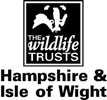Partnership working
We aim to deliver the project through a partnership between the private sector (farmers, landowners), conservation charities (Game & Wildlife Conservation Trust, Hampshire & IOW Wildlife Trust) and the public sector (Natural England, Environment Agency).



Management plans will be devised by the conservation charities and Natural England, implemented by landowners and conservation charities, and success monitored by the conservation charities.
New conceptual approach
Considerable investment has been made in the Avon Valley, primarily to benefit the breeding waders, through agri-environment schemes. However, this has involved solely habitat management, and the work has been dispersed and at a small scale, often involving single fields. We intend to demonstrate, using innovative techniques, that management of habitat and predation levels at the farm scale, to create ‘hotspots’ of increased breeding success in the landscape, is essential for the recovery of declining wader populations.
Advice and engagement
A full-time conservation advisor will ensure delivery of detailed, site-specific advice on habitat management while HLS is revised. The advisor will help halt further decline in the waders and will identify groups of fields suitable for the creation of ‘hotspots’ where increased resources will be targeted. Planning for Real will help to engage stakeholders.
On-site actions
Resources for habitat management through HLS are limited, and Life+ funding will be targeted at creating four ’hotspots’ of optimal habitat by financing measures that could not otherwise be implemented. Tree removal, coppicing and scrub clearance will create a more open landscape with few predator perches. Ditch widening and installation of predator exclusion fencing will be used to create ‘island refuges’. In-field wet features and sward management will improve conditions for wader broods. Targeted tracking and monitoring of predators will be deployed. Habitat restoration and water control with grazing or mechanical rush management will be implemented at five or six fields where snipe have bred in the past.
Monitoring
Numbers and breeding success of lapwings and redshank, abundance of predators and changes in other taxa will be monitored in order to measure the effectiveness of interventions.